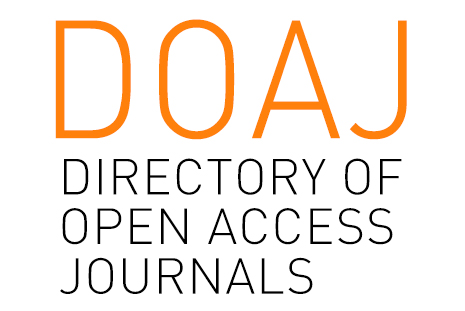Care management tools in primary health care in small municipalities in the state of Paraná
Ferramentas de gestão do cuidado na Atenção Primária de municípios de pequeno porte do Paraná
DOI:
https://doi.org/10.17765/2176-9206.2025v18e13112Keywords:
Care Management Tools, Primary Health Care, Small MunicipalitiesAbstract
The objective was to identify the use of health care management tools by Primary Health Care teams in small municipalities in the State of Paraná. Participants were 797 health professionals, predominantly women (703), who answered an online questionnaire on sociodemographic characteristics, professional performance, and care management tools, which were analyzed descriptively and using the Chi-square test. Home visits (73.1%) and matrix support (63.2%) were the most frequently reported tools. Nursing technicians, psychologists, and dental surgeons make frequent use of matrix support. Home visits were frequent for agents fighting endemic diseases, community health agents, nurses, and physicians. Shared consultations were commonly conducted by oral health technicians, and case discussions were frequently held by psychologists and nurses. Longer experience within the health unit was associated with the implementation of body practice/physical activity groups (p=0.03), while stable employment was linked to a higher incidence of shared consultations (p=0.01). In small municipalities in Paraná, home visits and matrix support were the predominant care management tools utilized by Primary Health Care professionals. In addition, both longer experience and stable employment were important factors associated with their use.
Downloads
References
1. Peduzzi M, Agreli HF. Trabalho em equipe e prática colaborativa na Atenção Primária à Saúde. Interface (Botucatu). 2018;22(Suppl. 2):1525-34. https://doi.org/10.1590/1807-57622017.0827.
2. Brasil. Ministério da Saúde. Portaria GM/MS nº 635, de 22 de maio de 2023. Institui, define e cria incentivo financeiro federal de implantação, custeio e desempenho para as modalidades de equipes Multiprofissionais na Atenção Primária à Saúde.
3. Silva WRS et al. A gestão do cuidado em uma unidade básica de saúde no contexto da pandemia de Covid-19. Trab. educ. saúde (Rio de Janeiro). 2021;19, e00330161. https://doi.org/10.1590/1981-7746-sol00330.
4. Brasil. Ministério da Saúde. Secretaria de Atenção à Saúde. Diretrizes do NASF: Núcleo de Apoio a Saúde da Família / Secretaria de Atenção à Saúde, Departamento de Atenção Básica. – Brasília: Ministério da Saúde, 2010. 152 p. – (Cadernos de Atenção Básica, n. 27).
5. Brasil. Ministério da Saúde. Secretaria de Atenção à Saúde. Departamento de Atenção Básica. Núcleo de Apoio à Saúde da Família / Ministério da Saúde, Secretaria de Atenção à Saúde, Departamento de Atenção Básica. – Brasília: Ministério da Saúde, 2014. 116 p. – (Cadernos de Atenção Básica, n. 39).
6. Guimarães BEB, Branco ABC. Trabalho em equipe na atenção básica à saúde: pesquisa bibliográfica. Rev. Psicol. Saude (Campo Grande). 2020;12(1):143-155. https://doi.org/10.20435/pssa.v12i1.669.
7. IBGE. Instituto Brasileiro de Geografia e Estatística. Censo Demográfico 2010. Disponível em: < https://censo2010.ibge.gov.br/sinopse/index.php?dados=0&uf=41>. Acesso em 08 dez. 2023.
8. Doring IR et al. Utilização de um parque público para atividade física: estudo prospectivo em uma cidade de pequeno porte do Sul do Brasil. Saud Pesq (Maringá). 2021;14(Supl.1):e-8334. https://doi.org/10.17765/2176-9206.2021v14Supl.1.e8334.
9. Brasil. Ministério da Saúde. Secretaria de Atenção Especializada à Saúde. Departamento de Atenção Hospitalar, Domiciliar e de Urgência. Atenção Domiciliar na Atenção Primária à Saúde [recurso eletrônico] / Ministério da Saúde, Secretaria de Atenção Especializada à Saúde, Departamento de Atenção Hospitalar, Domiciliar e de Urgência – Brasília: Ministério da Saúde, 2020. 98 p.
10. Cunha MS, Sá MC. Home visits within the Family Health Strategy (Estratégia de Saúde da Família - ESF): the challenges of moving into the territory. Interface - Comunic., Saude, Educ. 2013;17(44):61-73. https://doi.org/10.1590/S1414-32832013000100006.
11. Castro CP, Campos GWS. Apoio Matricial como articulador das relações interprofissionais entre serviços especializados e Atenção Primária à Saúde. Physis Rev Saúde Coletiva (Rio de Janeiro). 2016;26(2):455-481. https://doi.org/10.1590/S0103-73312016000200007.
12. Bispo Júnior JP, Moreira DC. Núcleos de Apoio à Saúde da Família: Concepções, Implicações e Desafios para o Apoio Matricial. Trab. Educ. Saúde (Rio de Janeiro). 2018;16(2):683-702. https://doi.org/10.1590/1981-7746-sol00122.
13. Bispo Júnior JP, Almeida E. Equipes multiprofissionais (eMulti): potencialidades e desafios para a ampliação da atenção primária à saúde no Brasil. Cad. Saúde Pública (Rio de Janeiro). 2023;39(10), e00120123. https://doi.org/10.1590/0102-311XPT120123.
14. Marti GF et al. Collaboration of Interprofessional Education to the PET-Health program for student training. Saud Pesq (Maringá). 2024;17(1):e-12113. https://doi.org/10.17765/2176-9206.2024v17n1.e12113.
15. Vieira LA et al. A Educação Física como força de trabalho do SUS: análise dos tipos de vínculos profissionais. Trab. educ. saúde (Rio de Janeiro). 2023;21, e01991210. https://doi.org/10.1590/1981-7746-ojs01991.
16. Nicoletto SCS et al. Desafios na implantação, desenvolvimento e sustentabilidade da Política de Educação Permanente em Saúde no Paraná, Brasil. Saúde e Sociedade (São Paulo). 2013;22:1094-1105. https://doi.org/10.1590/S0104-12902013000400012
Downloads
Published
How to Cite
Issue
Section
License
Copyright (c) 2024 Saúde e Pesquisa

This work is licensed under a Creative Commons Attribution 4.0 International License.
A submissão de originais para a revista Saúde e Pesquisa implica na transferência da Carta Concessão de Direitos Autorais, pelos autores, dos direitos de publicação digital para a revista após serem informados do aceite de publicação.A Secretaria Editorial irá fornecer da um modelo de Carta de Concessão de Direitos Autorais, indicando o cumprimento integral de princípios éticos e legislação específica. Os direitos autorais dos artigos publicados nesta revista são de direito do autor, com direitos da revista sobre a primeira publicação. Os autores somente poderão utilizar os mesmos resultados em outras publicações, indicando claramente a revista Saúde e Pesquisa como o meio da publicação original. Em virtude de tratar-se de um periódico de acesso aberto, é permitido o uso gratuito dos artigos, principalmente em aplicações educacionais e científicas, desde que citada a fonte. A Saúde e Pesquisa adota a licença Creative Commons Attribution 4.0 International.
A revista se reserva o direito de efetuar, nos originais, alterações de ordem normativa, ortográfica e gramatical, com vistas a manter o padrão culto da língua e a credibilidade do veículo. Respeitará, no entanto, o estilo de escrever dos autores. Alterações, correções ou sugestões de ordem conceitual serão encaminhadas aos autores, quando necessário. Nesses casos, os artigos, depois de adequados, deverão ser submetidos a nova apreciação. As opiniões emitidas pelos autores dos artigos são de sua exclusiva responsabilidade.

















